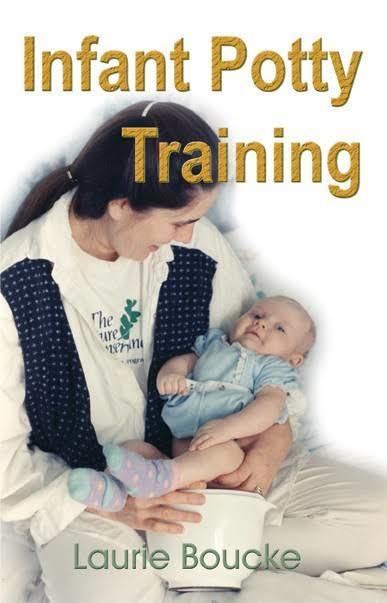Illustrator Rusty Haller Publication date 2000, 2002, 2008 Pages 330 | Cover artist Colin White Media type Trade paperback Originally published 2000 Country United States of America | |
 | ||
Publisher White-Boucke Publishing Similar Laurie Boucke books, Parenting books, Family books | ||
Infant Potty Training is both the name of a means of toilet training and the title of a book by author Laurie Boucke. The complete book title is Infant Potty Training: A Gentle and Primeval Method Adapted to Modern Living. It is an expansion of ideas that were originally presented in a small self-published volume called Trickle Treat in 1991. Infant Potty Training was first published in 2000, is now in its third edition (2008), and has editions in German, Dutch, Italian and Japanese. Infant potty training is traditionally used in at least 80 countries.
Contents
Boucke's method of infant potty training is based on an ancient means of toilet training stemming from cultures that don't use diapers and washing machines, and that has been adapted to a modern urban lifestyle in various ways, including the use of a potty or toilet, part-time pottying and part-time diapering. Instead of always letting a baby eliminate in a diaper, parents start to offer some potty or toilet visits, usually at a much earlier age than with contemporary toilet training.
Overview of the book
The book consists of four parts:
Synopsis of the practice
The key is to create cue associations that can be used as a means of communication. This is done by learning and responding to body language and vocalizations, as well as to elimination timing and patterns. As a child matures, he starts to intentionally signal about his toilet needs. As with other means of toilet training, there is no fixed length or guaranteed outcome. The four main steps for beginners are:
Parents watch and take note of the child's:
Parents anticipate when the child needs to go, then at that moment, give a cue signal (a sound, hand signal, word or phrase). The child will associate these with potty time.
After establishing a comfortable position — whether it be in-arms for an infant or on a potty or toilet for a toddler — the same position and location are used for a while, and the child associates these with potty time.
As the child matures, natural bodily and vocal communication expands to include intentional communication in various forms such as the use of sign language or other hand signals, vocalizations, words, and phrases. Parents continue to communicate through manual and audible signals.
History
Variations of infant potty training have been used in non-Western societies for centuries, and this information has been passed down both orally and later in writing.
A hindrance to the acceptance of the practice in modern Western societies for some years was the misconception that infant potty training is the same as a somewhat harsh and coercive method used in the early 1900s in Europe and North America that used suppositories to put the baby on a strict schedule of bowel movements. This harsh toilet training method is described in the 1929 and 1935 editions of Infant Care, a US Department of Labor, Children’s Bureau publication. However, gentler methods that did not rely on suppositories were recommended in the 1914 and 1938 and later editions of Infant Care. Though a regulated schedule was valued in many parts of infant care including toilet training, at no time was punishment considered appropriate for an infant under one year of age. Boucke's method of infant potty training focuses on learning and responding to the child’s natural elimination timing and signals rather than trying to institute a strict schedule.
